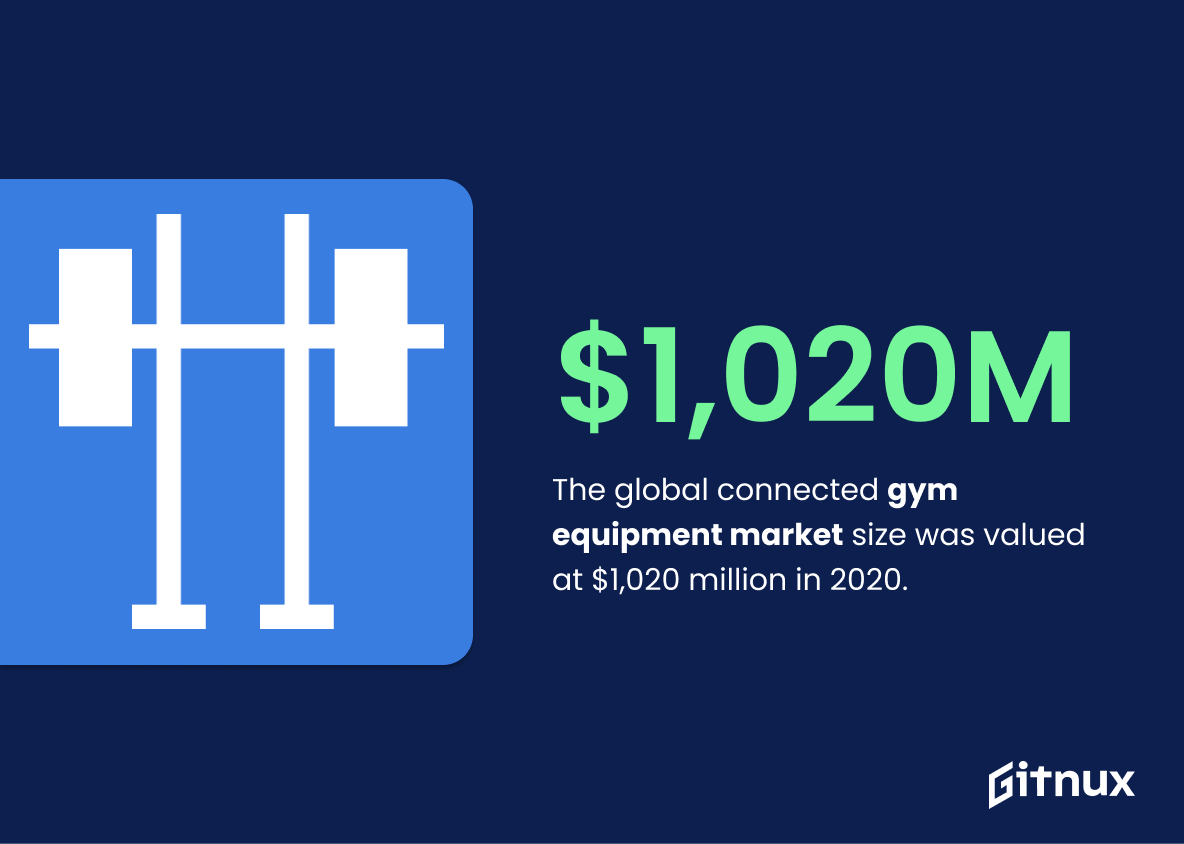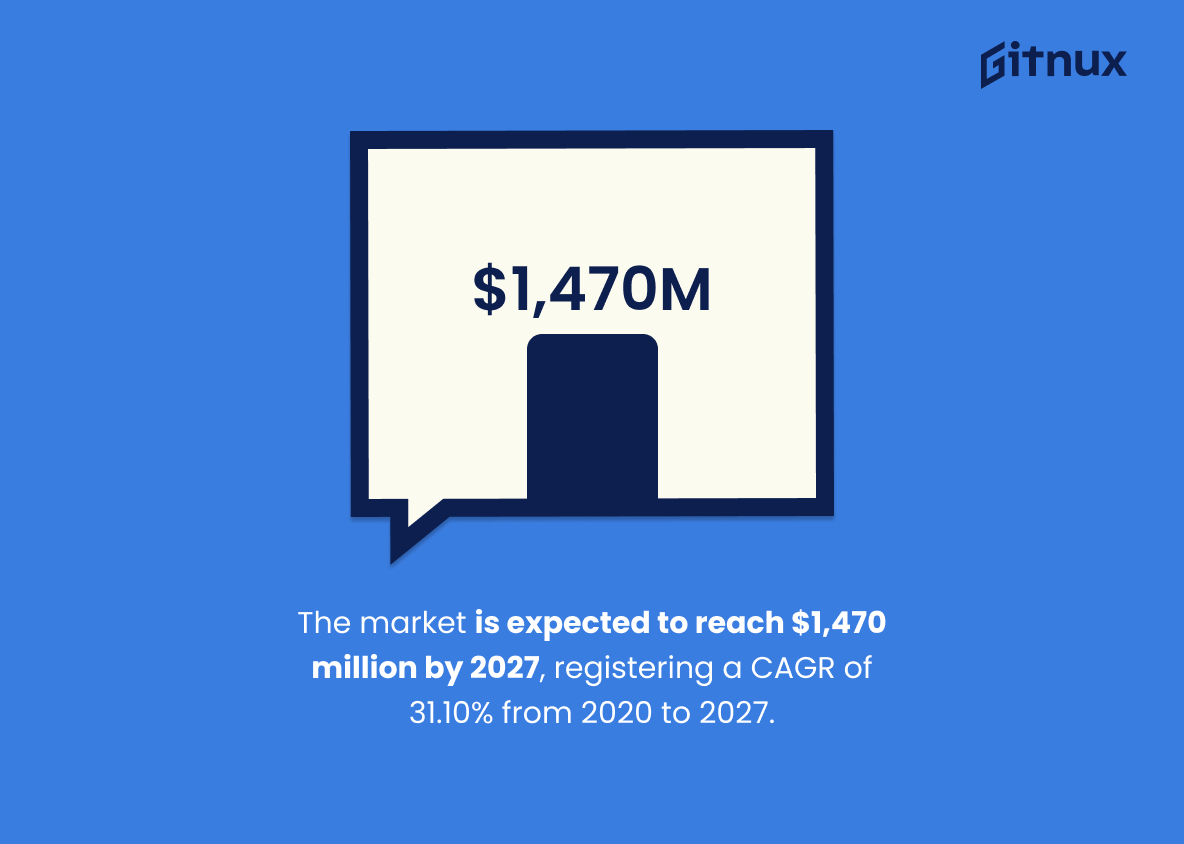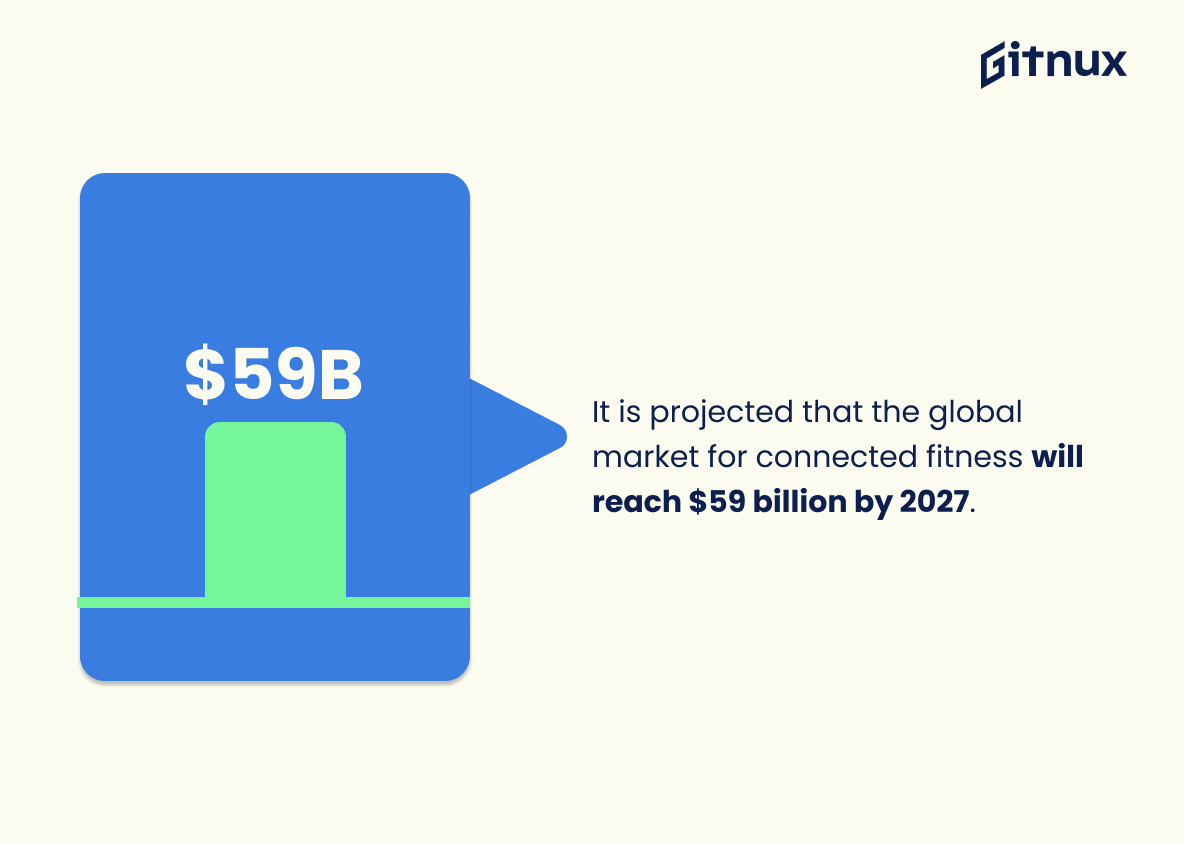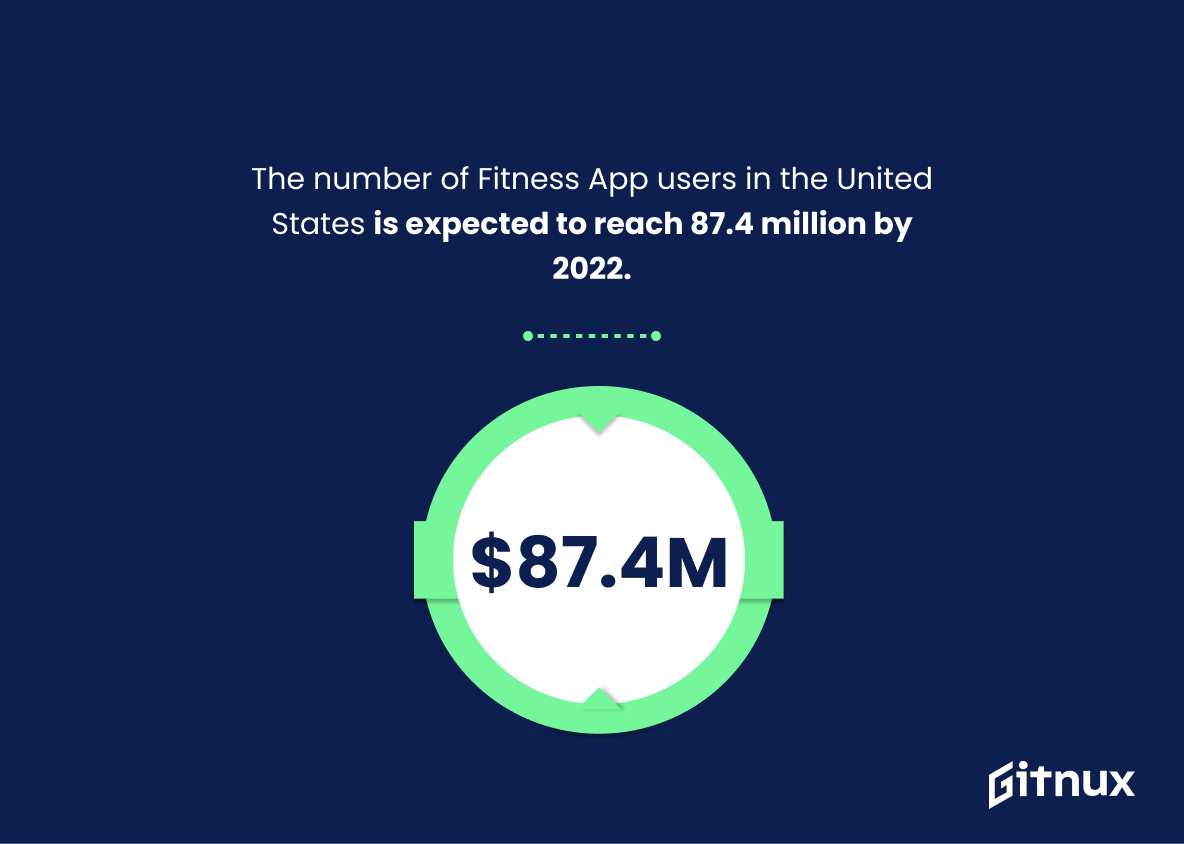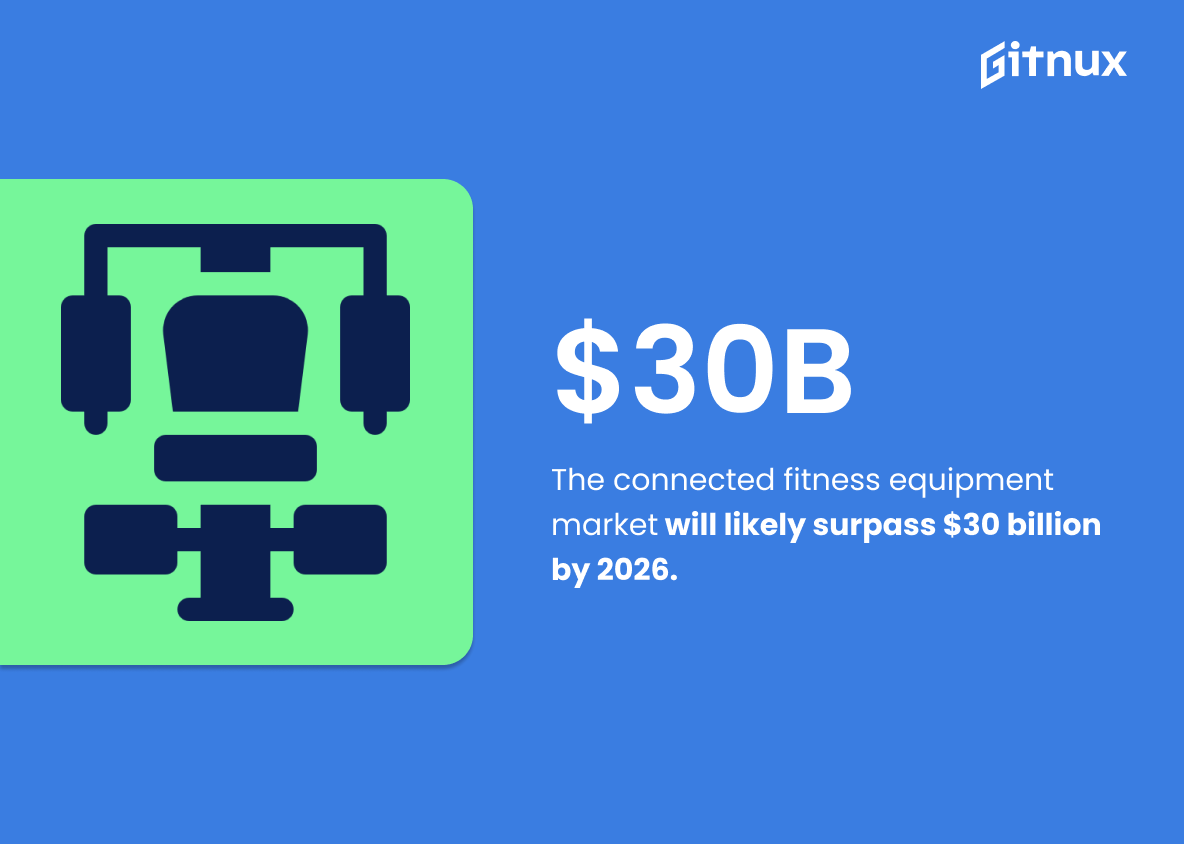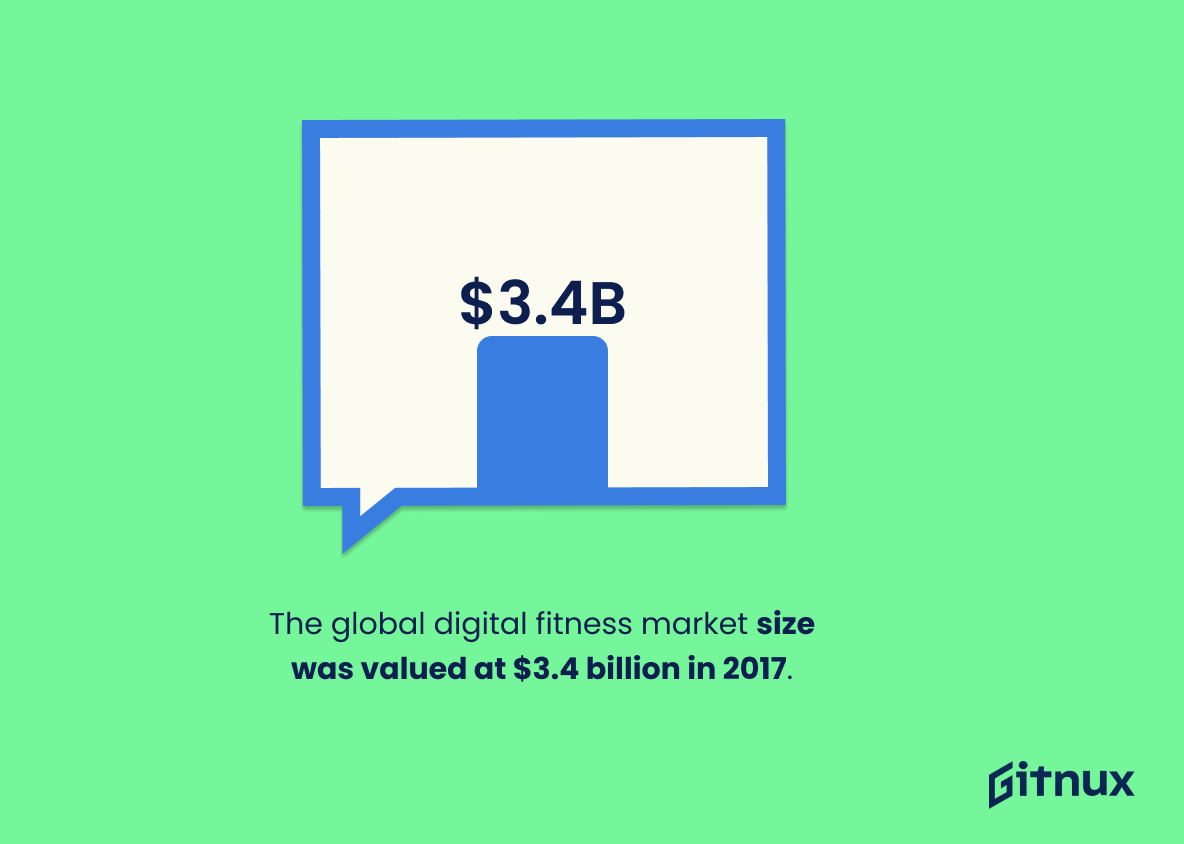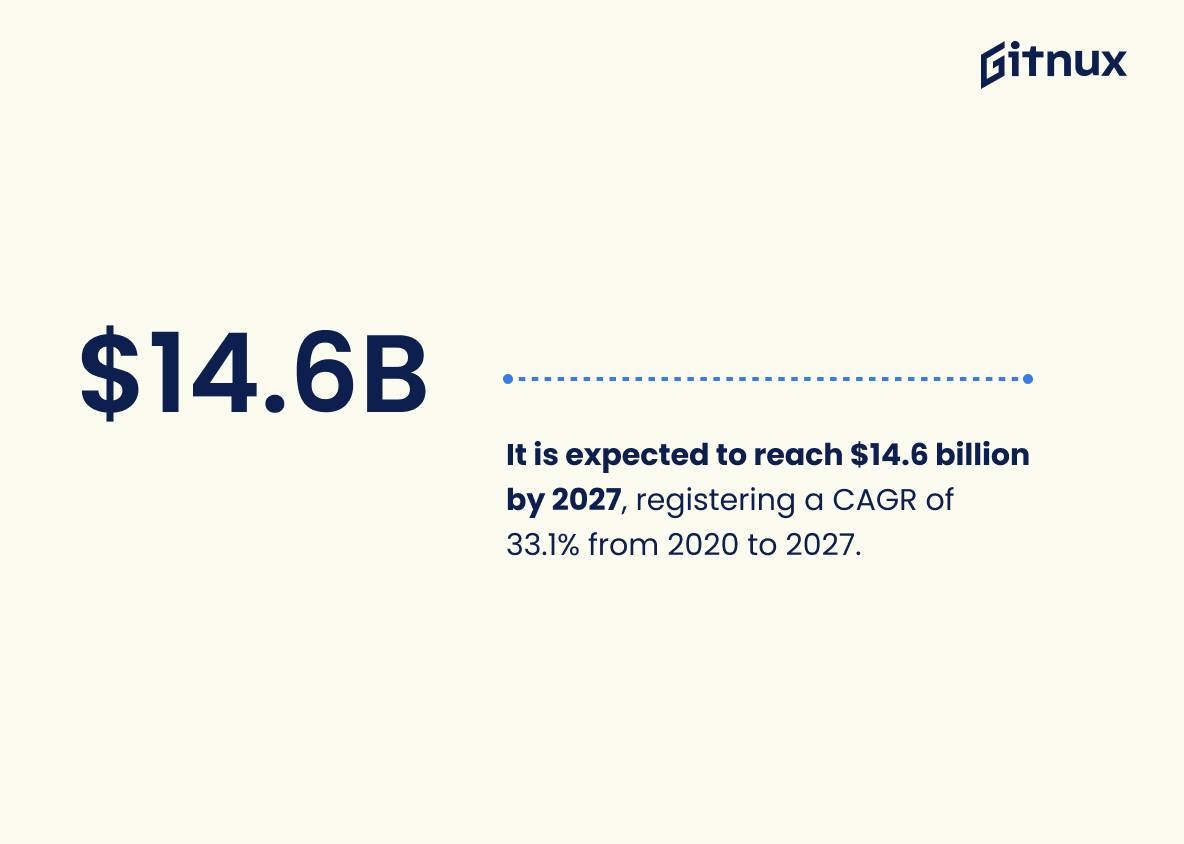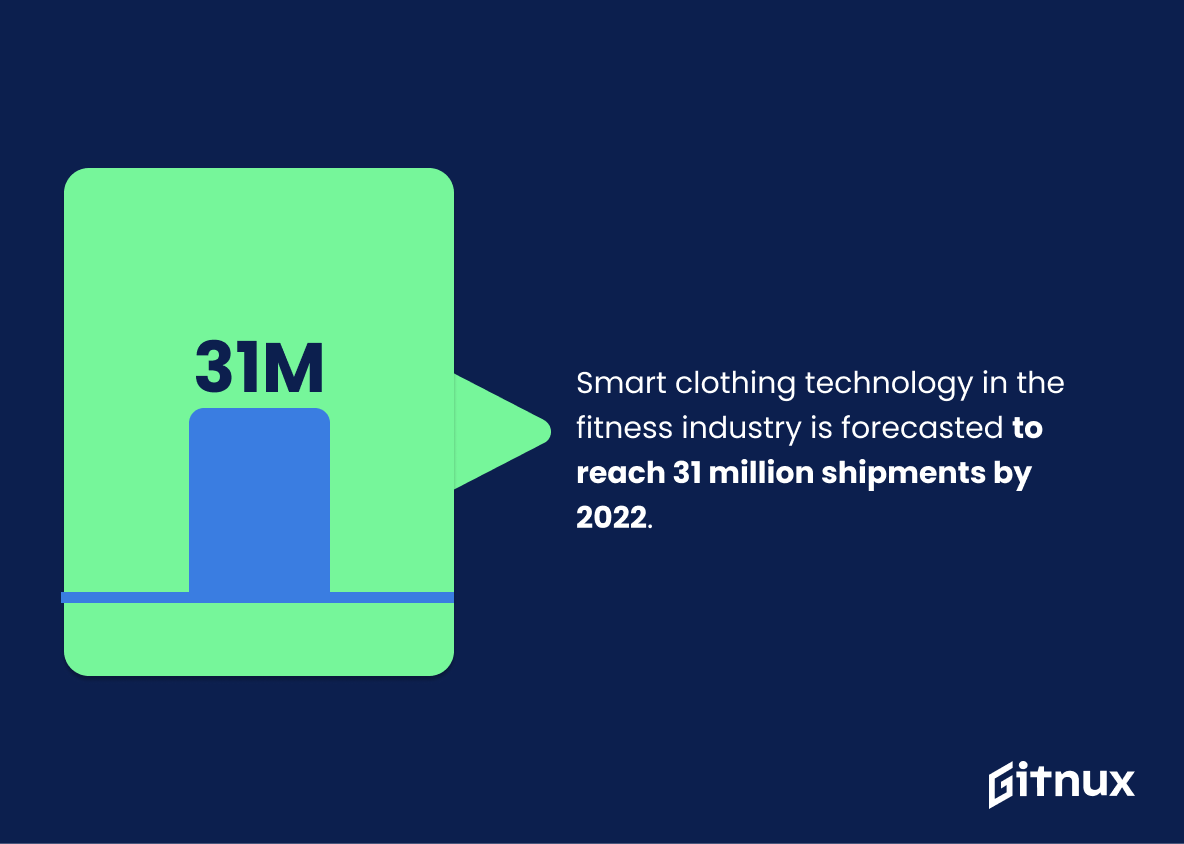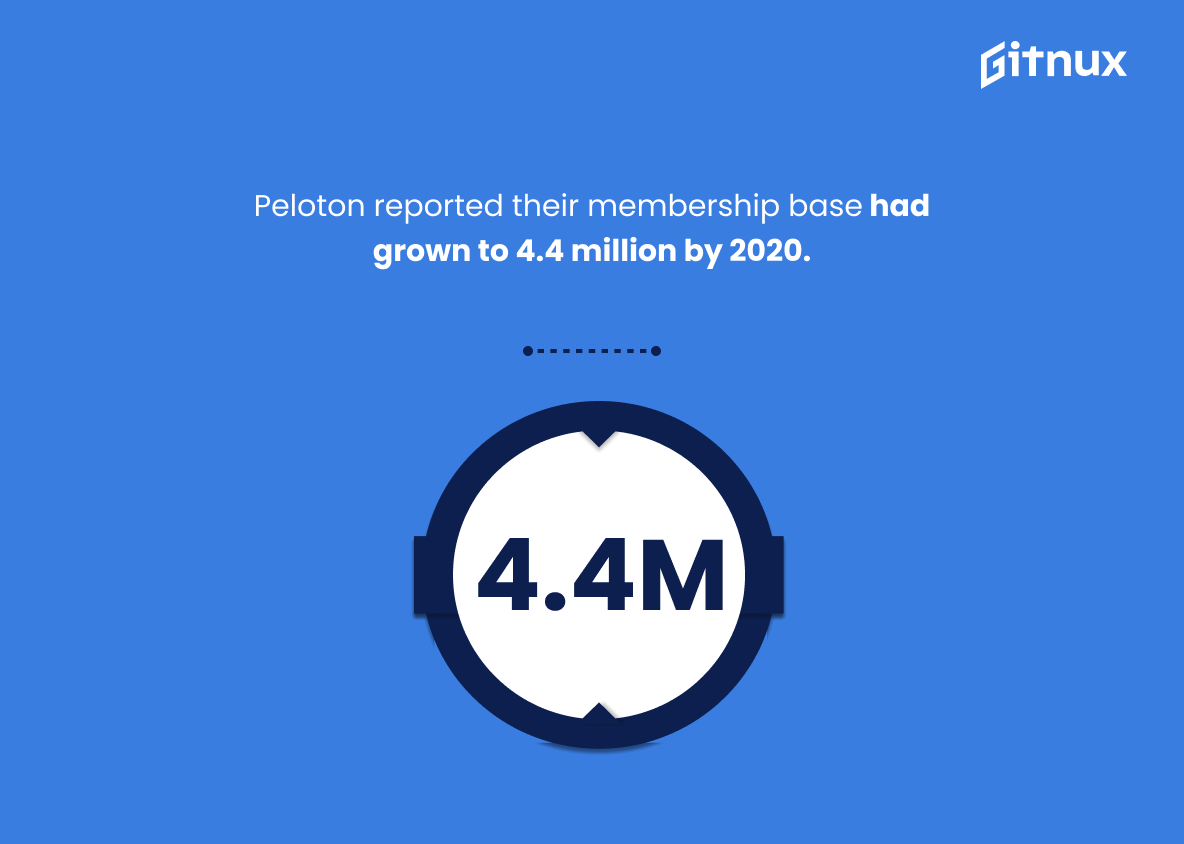In the ever-evolving world of modern technology, the fitness industry has taken a major leap forward, pivoting from traditional gym settings to the more tech-advanced landscape of Connected Fitness. As we venture deep into this burgeoning trend, we’re greeted with an intriguing spectrum of statistics, indicating the substantial growth and future prospects of the Connected Fitness Industry.
In this blog post, we will explore these captivating statistics, shedding light on the industry’s past performance, current state, and potential future trajectory. Get ready to dive into the world of connected fitness as never seen before.
The Latest Connected Fitness Industry Statistics Unveiled
The global connected gym equipment market size was valued at $1,020 million in 2020.
In painting a comprehensive view of the Connected Fitness Industry, a key dimension is the monetary evaluation of the global connected gym equipment market. The noteworthy valuation of $1,020 million in 2020 underlines not only the financial prominence of this sector within the larger health and fitness industry, but also indicates the substantial growth trajectory, as technology integration in fitness becomes more mainstream.
This figure is a clear testament to the current market strength and hints at a promising future, a dynamic of prime interest for stakeholders, startup enthusiasts, investors, and anyone tuning into the trends of the fitness industry.
The market is expected to reach $1,470 million by 2027, registering a CAGR of 31.10% from 2020 to 2027.
A glimpse into the future of the Connected Fitness Industry is certainly enthralling with a remarkable projection of it ballooning to a staggering $1,470 million by 2027. This is not merely a random guess, but a prediction grounded in a calculated Compound Annual Growth Rate (CAGR) of 31.10% from the year 2020. The reason this morphs from a simple data point to a captivating revelation lies in how it speaks volumes about the momentum the industry is set to gain. It paints a picture of a curve, climbing steeply, year on year, reflecting a revolutionary growth in a domain that perfectly marries fitness with technology.
For bloggers, readers, industry experts or fitness tech enthusiasts, this change is not incremental but exponential, underscoring a paradigm shift in how we perceive fitness, thus making the world sit up and take note. It implies not just opportunities for industry stakeholders but a significant transformation of people’s fitness journey, guided by connectivity and propelled by technology. The sheer scale of this forecast fuels the narrative of a promising future, steering the discourse of your blog post to a world waiting to be redefined by the Connected Fitness Industry.
The North American connected fitness market size was valued at $696 million in 2018.
Presenting the valuation of the North American connected fitness market at $696 million in 2018 sets the stage for a powerful narrative about the weightiness of this industry. It constructs a vivid picture of the magnitude and extent, underscoring the massive investment and interest in integrating technology with fitness.
Evidently, with such notable market value, the connected fitness industry cannot be dismissed as a passing fad, but rather should be perceived as a significant player in fitness evolution and revolution. This forms the basis for deeper exploration of industry trends, challenges and opportunities in the blog post.
It is projected that the global market for connected fitness will reach $59 billion by 2027.
Forecasting an ascent to $59 billion by 2027, the global connected fitness market is warming up to hit a promising homerun. Painting a tantalizing portrait of the future for industry players and stakeholders, this financial predictor has the prowess to grab every investor’s attention. It handcuffs itself to the potential of modern fitness technology and the limitless possibility it promises.
A sturdy financial pillar perched in a blog post about Connected Fitness Industry Statistics; such a revelation would document the industry’s growth trajectory while forecasting a bright profit-laden future. Every eye is sure to be hooked and every decision influenced by this bulging monetary landscape. Who wouldn’t like glimpsing into the pot of gold lying at the end of the connected fitness rainbow.
The number of Fitness App users in the United States is expected to reach 87.4 million by 2022.
As we delve into the eye-opening realm of connected fitness industry statistics, consider this: by 2022, nearly 87.4 million souls in the United States alone are projected to use fitness apps. Visualize this swarm of health-conscious individuals, synonymous with over a quarter of the country’s population, harnessing technology to improve their well-being.
Such a remarkable figure underpins the rapid expansion and potential of the connected fitness industry. It’s not merely about the staggering number of users, but the profound impact on lifestyle choices, health outcomes, and the economy. In decyphering this statistic, we reveal the growing thirst for accessible fitness solutions and a prospective market representing a remarkable promise for businesses, marketers, and innovators in steering a health-tech revolution.
The connected fitness equipment market will likely surpass $30 billion by 2026.
Bringing such a prodigious figure of $30 billion into the discussion, poised to be overtaken by the connected fitness equipment market by 2026, serves as a compelling testament to the monumental potential this industry beholds. It’s akin to a torch illuminating the path ahead, unveiling a lucrative future that is on the cusp of arrival.
This translates into a wealth of opportunities for investors, entrepreneurs, and innovators alike, as they steer their efforts towards this flourishing frontier. Undoubtedly, this number makes the conversation about the connected fitness industry statistics riveting, relevant, and a future-focused reflection of the market dynamics.
The global digital fitness market size was valued at $3.4 billion in 2017.
The potency of this statistic lies in its testament of the incredible monetary value of the global digital fitness market, valued at an impressive $3.4 billion in 2017. Within the context of a blog post regarding Connected Fitness Industry Statistics, it pinpoints the economic magnitude of the industry, acting as an indicator that the industry is indeed a thriving one.
With such a large financial footprint, it’s apparent that the digital fitness realm is far from its infancy; rather, it has matured into a global industry leader. It suggests that the integration of technology in fitness is not just a passing trend, but an influential sector that has attracted significant investment, and perhaps an industry that readers should pay attention to if they are looking to understand the future of fitness.
It is expected to reach $14.6 billion by 2027, registering a CAGR of 33.1% from 2020 to 2027.
This particular statistic provides a vibrant illustration of the meteoric growth trajectory projected for the connected fitness industry. The forecasted rise to $14.6 billion by 2027, coupled with an impressive CAGR of 33.1% from 2020 to 2027, underscores the rapid adoption and immense potential of technology in revolutionizing traditional fitness routines.
This projection is equivalent to a clarion call for investors, innovators, and fitness enthusiasts, suggesting a shift in the paradigm, ushering in an era where connected fitness is not a niche market, but a mainstream fitness business model. Thus, it creates a roadmap for both consumers and producers, highlighting the enthusiastic embracement of technologically advanced fitness solutions globally.
Smart clothing technology in the fitness industry is forecasted to reach 31 million shipments by 2022.
In the realm of connected fitness industry statistics, one cannot simply gloss over the forecasted explosion of smart clothing technology. Picture this: an astounding 31 million shipments before the calendar flips past 2022. This is not a mere trickle of interest, but a veritable torrent symbolizing a significant tipping point in consumer behavior.
This astronomical number points towards an accelerating shift towards merging fitness with technology, painting a future where we are inseparable from our intelligent fabrics. This predictive figure allows us to glimpse at a not-so-distant horizon where measuring our performance, monitoring our health, and achieving our fitness goals are deeply intertwined with smart clothing technology.
In essence, this 31 million forecast illuminates a critical trend underpinning the fast-paced evolution and growth in the connected fitness industry. It stands testimony to the increasing consumer appetite for tech-infused workout gear, highlighting a potential wealth of opportunities for businesses within this sector.
Peloton reported their membership base had grown to 4.4 million by 2020.
Examining the rise in Peloton’s membership to 4.4 million by 2020 offers fascinating insights in a post on Connected Fitness Industry Statistics. It elegantly illustrates the upward trend and burgeoning appeal of connected fitness platforms. The rapid growth underscores the shift in consumer behavior towards digitally-led, at-home fitness experiences as a response to modern lifestyle demands or global circumstances like the pandemic.
The health of Peloton’s expansion isn’t just a victory for the company. It’s a signal of the industry’s vitality, projecting the burgeoning potential for other businesses in the realm of connected fitness. The strategic implications of these numbers are invaluable as they serve as a benchmark for competition, innovation, and market sizing within the industry.
As of 2021, Apple Fitness+ has approximately 68 million global users.
Understanding the global landscape of the connected fitness industry can be greatly enlightened by casting a lens on Apple Fitness+’s impressive feat. With a whopping 68 million global users as of 2021, this Apple product stands as a formidable testament to the widespread acceptance and usage of virtual fitness tools and platforms. The immense number of users worldwide implies a surge in the adoption of fitness technologies that modify traditional workout routines into a more interactive and connected experience.
This statistic also underscores the significant potential for growth and diversification within the connected fitness industry, while suggesting that companies operating in this sector could be looking at a broad, tech-savvy audience eager for innovative fitness solutions.
Fitbit had 29 million active users in 2020.
Interpreting such a staggering figure, Fitbit’s gathering of 29 million active users in 2020 paints a vivid picture of the buoyant growth trajectory within the connected fitness industry. Encompassing nearly 30 million health-conscious individuals, this data point clearly signifies the mass consumer adoption of health technology wearables.
In the landscape of our blog post, the statistic serves as a striking testament to the immense market reach and consumer acceptance of digitally driven fitness solutions, and underlines Fitbit’s eminent role in shaping this rapidly evolving industry.
As of May 2021, among Connected Fitness users aged 18 to 29, 12.2% use apps frequently.
Featuring the statistic -‘As of May 2021, among Connected Fitness users aged 18 to 29, 12.2% use apps frequently- we shed light on the youthful attraction towards this evolving industry. Such a number highlights the penetration of Connected Fitness apps among the young, tech-savvy audience who represent not just large consumer potential, but also the future predictors of fitness industry trends.
The intensity of their usage provides insights into how integrated these fitness platforms have become in their workout routines and act as an influential view into the growth and adaptability of the Connected Fitness industry over the coming years.
In 2018, 25% of the US population used a fitness, health or medicine mobile app.
Delving into the world of connected fitness industry statistics, the number that really puts things into perspective is from 2018: 25% of the US population had engaged with a fitness, health or medicine mobile app. That’s a solid one in four people effectively transforming their mobile devices into personal trainers or health advisors, by reaching a world of fitness right in the palm of their hands.
This number isn’t just a dry percentage, it’s a testament of broad consumer acceptance of fitness technology. It’s a window into a future where fitness, health and medicine aren’t external concepts, but integrated parts of our everyday life, invariably tied to our ubiquitous devices. For businesses in the connected fitness industry, this presents extensive possibilities, offering profound implications for the development of innovative products, comprehensive services, personalized engagement strategies and impactful marketing.
In essence, this 25% represents the pulse of a burgeoning industry, underlining the potential growth and reach of connected fitness in a health-conscious era. And with each downloaded app, we’re not just counting users—we’re outlining the trajectory of a revolution in health and fitness.
The use of fitness equipment connected to the internet could grow by a massive 30% by 2022.
Illuminating the landscape of future trends, our statistic foresees a titanic surge of 30% in the uptake of internet-connected fitness tools by 2022. This momentous shift paints a vibrant picture of technology and health becoming increasingly intertwined, bolstering the content of this blog post as it enlivens discussions surrounding the connected fitness industry. With this potential expansion, stakeholders have a crucial roadmap to identify market opportunities, emphasizing their need to stay ahead of the curve in this digitized fitness revolution.
Smart wearable fitness and sports devices sales worldwide were predicted to be about 310.4 million in 2020.
In the interconnected landscape of the fitness industry, the forecasted sales of around 310.4 million for wearable fitness and sports devices globally in 2020 paint a vivid picture of the growing trend towards digital fitness. This significant figure underscores not only the escalating demand for these fitness aids, but also illustrates a seismic shift in how people approach their personal health and fitness goals.
From tracking steps to monitoring heart rates, wearables have emerged as integral companions for those on a fitness journey. Their augmenting sales translate into the proliferation of tech-integrated fitness solutions and signal an era of connected fitness where devices, data, and workouts collude to drive actionable insights and better fitness outcomes. This surge in demand is reshaping the fitness industry, nudging it towards a more personalized and precision-driven direction.
Projections have shown the smart fitness market at $29.4 billion by the end of 2026, having set annual growth rates of 19.62%.
Submerged in the ocean of Connected Fitness Industry briefings, this forecast of the Smart Fitness market blooming to $29.4 billion by 2026, and expanding at an impressive rate of 19.62% per year, shines like a dazzling diamond of insight. It thrusts us into an exhilarating ride into the future, glimpsing growth that is as rapid as a cheetah and as potent as a storm.
It signals the enormous opportunity lying incognito, ready to be unveiled, within the intertwined realms of technology and fitness. Furthermore, it underscores the colossal demand from health-conscious consumers and fitness enthusiasts for smart fitness solutions, painting a picture of the future that could inspire businesses and innovators within the connected fitness industry.
By 2025, wearable devices are predicted to double in usage, reaching shipments of 260 million, with an installed base crossing 800 million.
In the fast-paced world of the connected fitness industry, data is king. Extrapolating from the projected surge in the adoption of wearable devices, one can catch a promising glimpse into the shape of things to come. By 2025, envisaging a twofold jump in usage to reach shipments of a whopping 260 million, alongside an installed base eclipsing 800 million, equates to a seismic shift in the landscape of fitness technology.
This crystal-ball gazing at hefty figures paves a rainbow-bricked roadmap for fitness providers. It signals not just an opportunity to carve up a bigger slice of the market pie, but also to dish out innovative solutions for a vast, device-donning demographic. Think smart shoes, glasses, and even fabrics – the wearables of tomorrow that promise to augment our workouts, monitor our health parameters and transform the everyday fitness experience.
In a nutshell, the boom in wearables is more than a trend, it’s the pulsating heartbeat powering the connected fitness industry. Industry players racing to keep pace or get ahead of the curve, will undoubtedly find these projections invaluable, illuminating the way forward.
Treadmill interactive machines were estimated to have 36.1% of the connected fitness market in 2019.
Diving deep into the pulsating heart of the Connected Fitness Industry, one can trace the powerful rhythm of Treadmill Interactive Machines. These high-tech wellness warriors made a notable impact, commanding an impressive 36.1% slice of the connected fitness market in 2019.
This number echoes far beyond its impressive magnitude. It represents the footprint of a trailblazer racing ahead in an increasingly digital landscape. Embodying nearly a third of the market, this statistic underscores the increasing consumer demand for seamlessly integrated fitness solutions in their treadmill workouts, thus shaping the future dynamics of the connected fitness industry.
49% of consumers are willing to share personal data in exchange for personalized fitness plans.
Diving into the bustling world of the Connected Fitness Industry, the statistic that 49% of consumers are willing to share personal data for personalized fitness plans sends ripples of opportunities. It splashes a fresh perspective and provides an unexplored terrain for industry players. This particular percentage indicates a surging wave of consumers becoming more open and accepting of the idea to share personal information, completely transforming the dynamics of the fitness industry.
The readiness of consumers to offer their data signifies their longing for exercise routines fine-tuned to their body’s abilities and needs. Hence, it illuminates a path for companies to swim towards – leveraging individualized, data-driven fitness plans that hit the sweet spot of consumers’ health goals and personal preferences. Thus, this statistic serves as a compass, guiding future business strategies and illuminating new possibilities within the connected fitness industry.
Conclusion
In synopsis, the connected fitness industry is revolutionizing the way we understand health, fitness, and wellness. The fresh and increasingly sophisticated approach towards integrated technology and fitness is undoubtedly picking up steam in the market. As the statistics clearly depict, user engagement and revenue are constantly soaring, while major industry players continue to innovate and transform the fitness landscape.
Understanding these connected fitness industry statistics are crucial not just for tech-driven fitness companies, but also for everyone seeking to carve out a healthier, smarter lifestyle. It is indeed an exhilarating time to be witnessing this rapidly evolving industry. Stay connected, stay fit.
References
0. – https://www.www.businessofapps.com
1. – https://www.www.cnbc.com
2. – https://www.www.gminsights.com
3. – https://www.www2.deloitte.com
4. – https://www.www.alliedmarketresearch.com
5. – https://www.www.academia.edu
6. – https://www.blogs.oracle.com
7. – https://www.www.statista.com
8. – https://www.www.grandviewresearch.com
